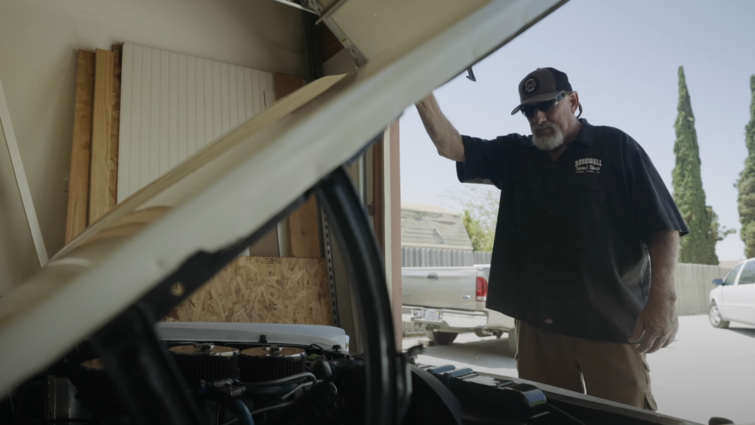

"Don't be afraid to get your PSA checked," proton therapy patient, Galen Bakewell said. "Be a man and go in there and get it taken care of."
"Don't be afraid to get your PSA checked," proton therapy patient, Galen Bakewell said. "Be a man and go in there and get it taken care of."
I was ready to move on with my life when I found out I had prostate cancer. Galen Bakewell
The 67-year-old car and motorcycle enthusiast's prostate cancer diagnosis came as a shock during a routine physical, where a rising PSA level led to further investigation. Just being introduced to retired life, a biopsy confirmed his worst fears: prostate cancer.
Read: Nervous about prostate biopsy? Procedure, process, and implications
He had intermediate-risk prostate adenocarcinoma, characterized by a Gleason score of 4+3. After a consultation with radiation oncologist Ivan Namihas, MD, Bakewell made a crucial decision. He chose proton therapy over surgery due to its non-invasive nature and reduced risk of side effects.
Proton therapy differs from traditional radiation treatments because it uses high-energy protons to target cancerous cells precisely. Namihas said proton therapy allows doctors to minimize exposure to healthy tissues while delivering high doses of radiation to the prostate. "We can cumulate them and select the right energy so that those protons penetrate precisely to the depth of the target," Namihas said. By targeting only the cancerous area, proton therapy reduces damage to surrounding organs like the bladder and rectum, common concerns among patients undergoing traditional treatments.
The proton beams, positively charged particles from the nucleus of the atom, are accelerated and directed into the patient through a sophisticated system. "When these protons stop, they're mutating that DNA to where it prevents the cancer cell from making a new cancer cell," Namihas said.
For Bakewell, the therapy was not only effective but also surprisingly manageable. Despite some initial anxiety, he found the process reassuring. "I went in for the first day of treatment feeling good — apprehension, just a little bit," Bakewell said. "Once they all left the room, it makes you think a little bit harder, 'Am I doing the right thing?' After the first treatment was done, I realized it was not going to be hard to do all the rest."
The Value of Routine Screenings
Bakewell emphasizes the importance of regular health screenings, as his high PSA levels were found during his annual screening.
"Don't be afraid to get your PSA checked," Bakewell said. "Be a man and go in there and get it taken care of."
Read: My PSA is elevated — what happens next?
Prostate cancer is one of the most common cancers in men, and a simple blood test measuring the level of prostate-specific antigen can be lifesaving. Catching the disease early increases treatment options and improves survival rates. He will continue regular monitoring every six months for the next five years. If the numbers don't rise appreciably, then cancer is cured.
"It's interesting to have gotten a disease I didn't know I had, get a treatment I can't feel, and walk away feeling nothing but knowing that I'm in better shape than I was when I went in," he said. "It's a win-win situation in a way."
With a clean bill of health, he's back to enjoying the hobbies that define him. "I have a hot rod that I've been working on for a while," Bakewell said. "I look forward to doing that, probably riding my motorcycle around a little more than I have in the last few years."
Loma Linda University Health experts are committed to providing compassionate, comprehensive, and personalized care throughout your prostate cancer screening journey. Make an appointment for a prostate cancer screening for you or a loved one today.



